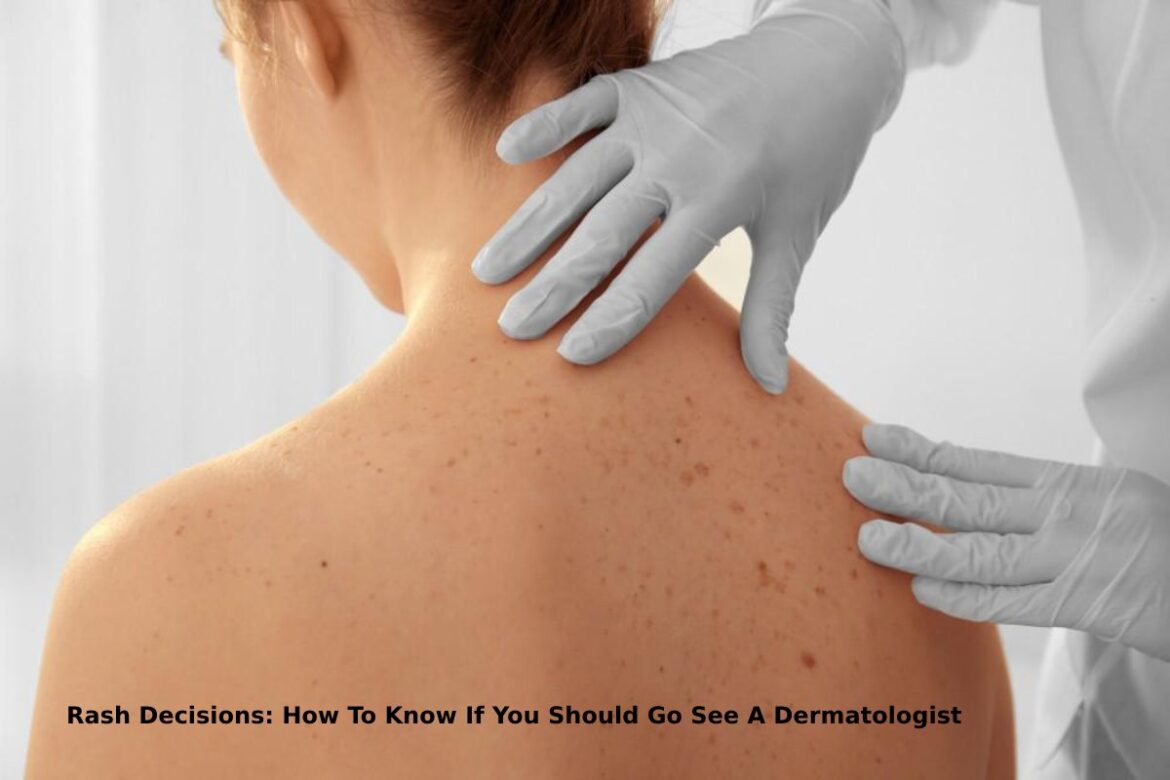Rash Decisions – When you have a cold, you take some medication, have a nap, and maybe a bowl of chicken noodle soup. If your stomach aches a little, you know to sip on something that settles your gut. For broken bones, head to the ER, and so on. Medical problems always have sufficient medical solutions, but the field of dermatology can get a bit tricky.
When it comes to your skin, you may be missing the mark without realizing it. How do you know when it’s time to see a dermatologist? Let’s discuss the types of things that a dermatologist handles and when you should book an appointment.
Rashes
Rashes are one of the most common reasons that people visit a dermatologist. It’s important to know when to see a dermatologist so you don’t miss any potential signs of greater problems.
It’s also important to remember that not every rash requires a doctor’s attention. But for the majority of people with rashes, there are some simple steps you can take at home to help improve your condition.
If you have a rash that lasts more than two weeks, or it gets bigger or spreads beyond the area where it started, it’s time to see your doctor. You may also want to see a dermatologist if you experience a rash that bleeds easily, a rash that is accompanied by a fever, a rash that is difficult to treat with over-the-counter remedies, and rashes on areas of your body that are particularly sensitive such as the face or the genitals.
Acne
And also, acne is another common reason that people visit a dermatologist. Acne can be classified in many different ways, but the most common type is called cystic acne.
If you’ve had acne for more than six months and it’s not responding to over-the-counter treatments, it’s time to see a dermatologist. You may also want to see a dermatologist if your acne is severe, you have difficulty wearing makeup or you experience significant skin pain.
If you have mild or moderate acne, there are some steps you can take at home to improve your condition. But if your acne is severe or persistent, you’ll need professional help.
Moles
Moles are usually harmless and don’t always require medical attention. But if you notice a mole that changes in shape, size, or color, or if there’s an abnormal discharge from the mole, it’s time to see a doctor.
There are many types of moles, so it’s important to consult with your doctor before making any decisions about treatments. Many moles can be treated with over-the-counter products, but some moles may require surgery.
Psoriasis
Psoriasis is a chronic condition that causes red patches on the skin that may spread beyond the original areas of infection. It’s often hard to treat and can cause significant distress for people afflicted with it.
If you have psoriasis that hasn’t cleared up after several months of treatment with over-the-counter medications and topical treatments, it’s time to see your doctor. Psoriasis may also require systemic therapies such as phototherapy or systemic corticosteroids.”
Eczema
If you have eczema, you should see a dermatologist. Eczema is a very common skin condition and can be tough to treat. A dermatologist can diagnose your eczema and recommend the best treatment plan for you. They may also be able to help you prevent flare-ups by prescribing treatments like topical medications or creams. If your eczema is severe, a dermatologist may also refer you to a specialist for further treatment.
Skin Cancer
Skin cancer is the most common type of cancer in the United States. It’s also the most common type of cancer that occurs on the skin. Skin cancer can be caused by UV exposure, and it’s important to see a dermatologist if you think you may have skin cancer. A dermatologist can perform a skin check to look for suspicious lesions and may refer you to a specialist if needed.
Hair Loss
If you’re experiencing hair loss, it’s important to see a dermatologist. Hair loss can be a sign of many different things, and a dermatologist can help you determine the cause and recommend the best treatment plan. They may also be able to help you prevent further hair loss by prescribing treatments like drugs or surgical procedures.
Rosacea
Rosacea is a common skin condition that affects people of all ages. It’s characterized by redness, inflammation, and flushing. Rosacea can be difficult to treat, but a dermatologist can help you find the best treatment plan and prescribe medications or therapies to relieve symptoms.
It’s important to see a dermatologist if you think you may have any of these conditions. A dermatologist can perform a skin check to look for suspicious lesions and may refer you to a specialist if needed.


